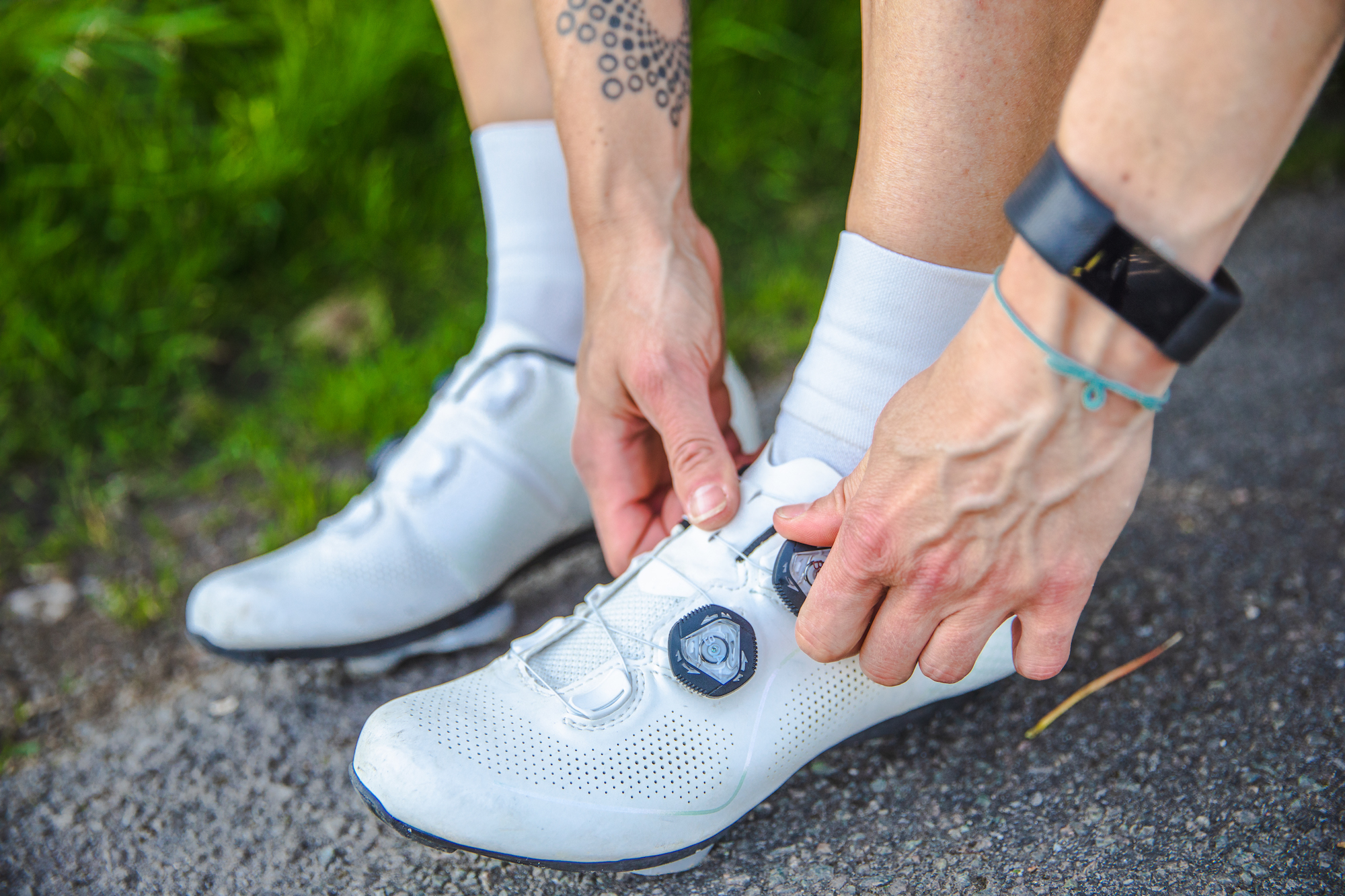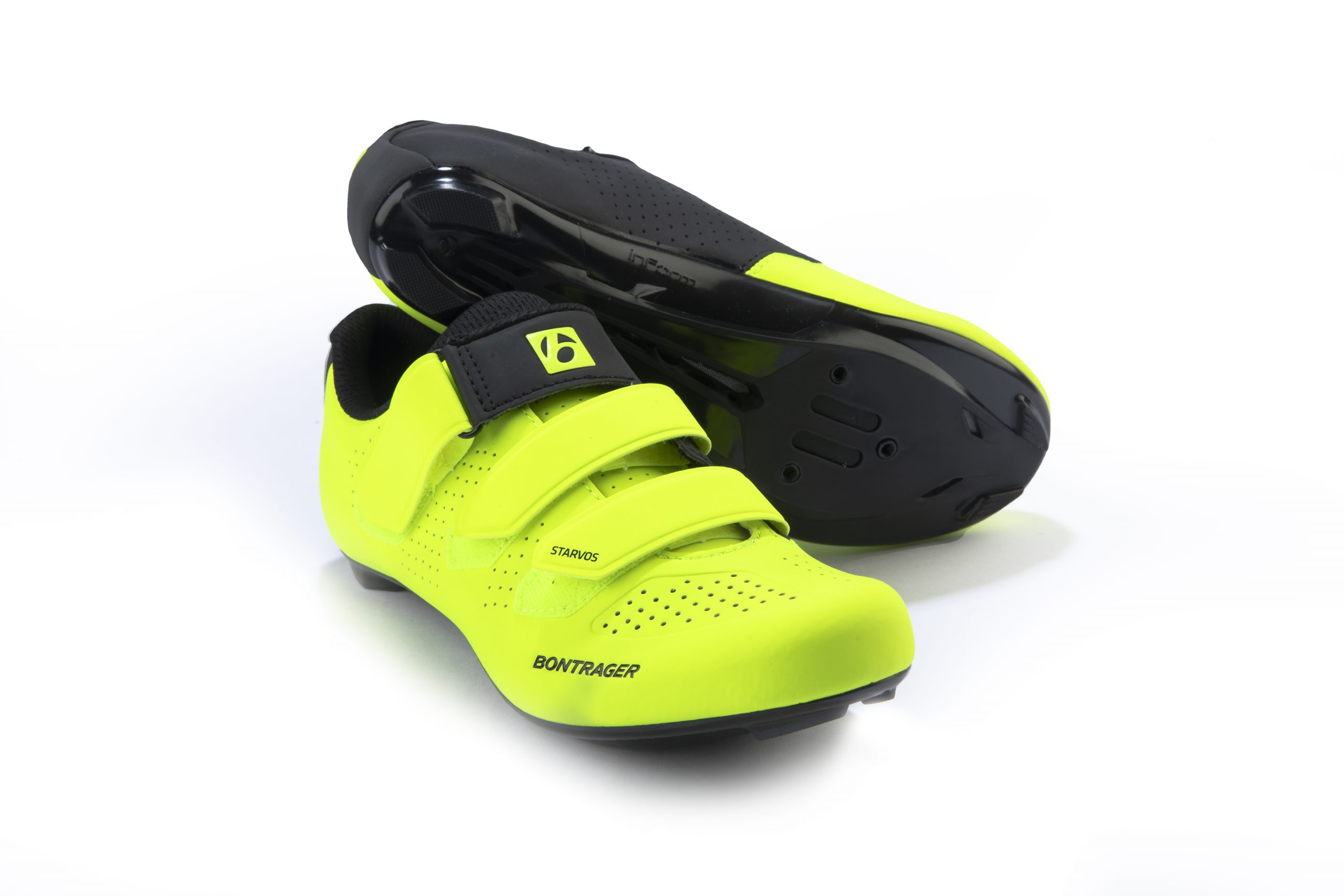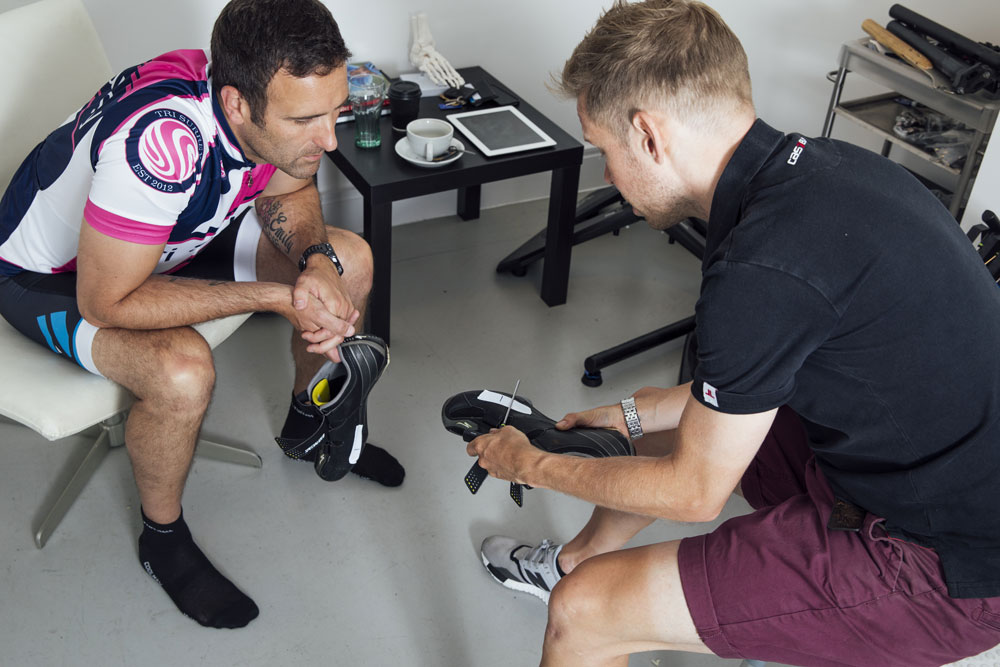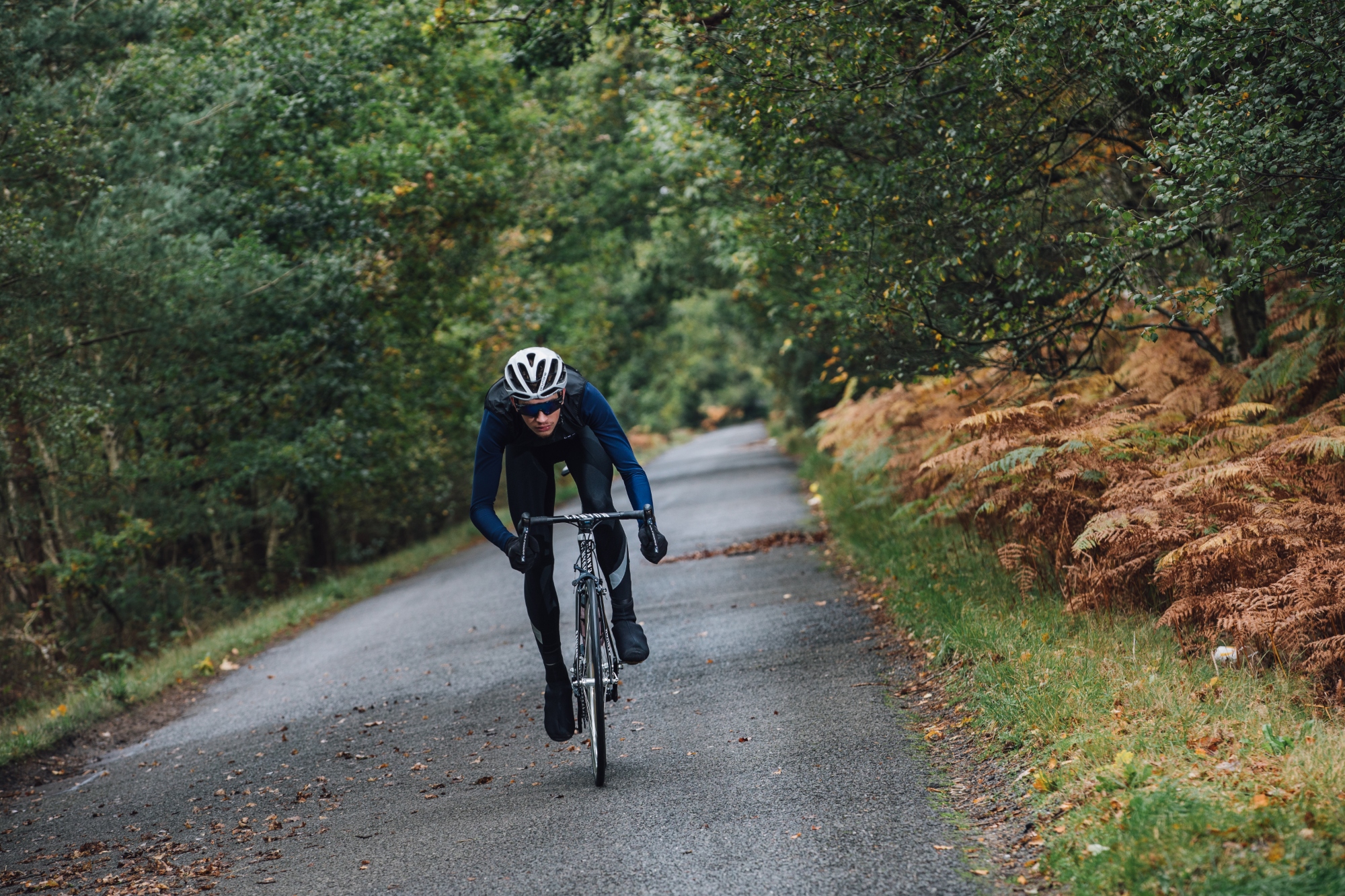Why are cheaper cycling shoes wider?
Do the pros wearing the very best shoes have fewer toes?

Cycling, shoes, riding, summer

It’s frustrating enough when you order a ‘pro’ jersey in your normal size, only to discover when it arrives that it would fit better on your two-year-old nephew. However, when the Cycling Weekly tech team set about testing £100 cycling shoes, we were surprised to discover that most of them seemed to come up much bigger than offerings from the same brands, at a higher price point.
The key difference between entry-level shoes and high-end shoes is usually down to the sole – top flight kicks use carbon; elsewhere there will be nylon with varying degrees of fibre injection. The fastening on cheaper shoes is more likely to be Velcro as opposed to a Boa dial, too. Those features come down to cost and aren't surprising.
>>> Looking for high end shoes for wider feet? See our grouptest here
But why the increased width, we mused? Do customers who plan to spend £100 have wider feet than those spending £300? Do all the best pro riders, wearing the shiniest and coolest shoes, secretly have only four toes?
Well, the brands making these shoes have confirmed the wider fit is not unintentional. Indeed, Bontrager overtly discusses this phenomenon in its marketing material. The £99 Starvos, it says, uses ‘inForm Race fit’ which is a “slightly roomier, high-performance fit”, compared to the £189 Velocis which uses an 'inForm Pro' last which “delivers an ergonomically optimised, high-performance fit.”

A last is the template shoe brands use to create their footwear, it defines the “width, depth and shape of the shoe” according to biomechanical podiatrist to the cycling elite, Mick Habgood. They’re expensive to produce, so most brands will have only one, but the fabric used in the upper will deviate based upon the desired fit and properties of the materials.
A representative from Bontrager told us: “Our shoes are all designed around the same last, assuming they all come from the same vendor. Fit then changes depending on use. The lower end shoes are less about performance and more about comfort which means a looser fit with more padding.
"They’ll even design an entry level road shoe that you can walk in with more comfort.”
Other factors include expected sock choice: road cyclists buying £180+ shoes are more likely to buy dedicated cycling socks which are thinner. The brand also noted that a wider shoe offers more inclusivity for a broader range of riders.
This looser fit will be comfortable for a rider completing more endurance-based rides. The shoe will feel more familiar when compared with other sports footwear, such as trainers. However, if the rider begins to look for greater power transfer, the looser fit may become a hindrance.
Habgood uses the example of ski boots, “If you’re going to learn to ski, you won’t go into a high-end boot. It’s very hard to learn how to turn the skis in an aggressive boot, and it’ll hurt like hell to wear them. If someone is skiing for the first time they'll go into a boot that is super soft, super comfortable, it feels beautiful to wear – but in the end, it makes it really difficult to do anything that requires a bit of competency because the boots just aren’t stiff enough to donate enough power to do so.
“When you look at it from a cycling shoe perspective, it's not far off that,” he says.
“All brands will use the same last, because it’s just too expensive to have more than one type of last. But the more entry-level shoes will have a softer upper. The materials are much bulkier, they're much floppier.”
Not only is the material more flexible, and less compressive to begin with, he adds “it will stretch more over time, too.”

To a rider who is new to cycling shoes, which with their stiff soles and slippery cleats already feel quite alien compared to any other footwear, this extra room is not unwelcome. If that rider continues to cycle at the same level of intensity, it’s possible nothing will change and they'll continue to feel at home within their cycling slippers. This cyclist may well be perfectly served by the same shoes forevermore.
However, if the rider decides that they want to prioritise power transfer on the bike, they may find themselves longing for something different.
“The thin materials at the top end are firm and provide a super conformed fit. You get a more confined and tapered fit and the shoe just gets much, much stiffer, which aids power transfer,” Habgood says. He says he's produced orthotics for riders that, in a top-end shoe, provide an additional 13% of power transfer for an elite rider. "But you wouldn't get the same difference in a lower-end shoe, the shoe wouldn't be able to retain the stiffness required to transfer all that power," he says.

To an extent, there’s a ladder of product and an incentive for brands to offer something to aspire to. “You have to keep in mind that it is all sales driven. They want you to buy into the next product,” Habgood says.
And what if a rider wants a close fit, but wants to spend less – should they size down? Probably not.
“I wouldn't advise that a rider going for a lower quality shoe sizes down. If anything the width will stretch more than the length over time. Rather than sizing down, find the right shoe,” the podiatrist confirms. Each brand uses its own last, and a size 40 in one brand's footwear may be very different from a 40 in another. In fact, Habgood has measured various pairs against each other to create a useful resource here, he points to Sidi and Fizik as some of the narrower brands, with Lake the best for those after a wide fit. And the golden advice? "Always aim to try on shoes rather than buying online."
Women’s shoes
There’s always debate over whether women’s product’ is predominantly marketing or science based, but according to Habgood, there's no disputing the matter with shoes: women are, on average, better served by shoes created around a female foot last. At the lower end, there are very often women’s models, but it’s notable that availability reduces towards the high end.
“It is harder for females to find a good fit,” Habgood says. “There are just so few women’s specific cycling shoes on the market, and women do have different feet to men. In helmets, there’s no statistical difference. But in feet, there is a difference. Women typically have a wider forefoot and narrower heel compared to men. The cycling industry is male dominated when it comes down to shoes which is ridiculous.”

Thank you for reading 20 articles this month* Join now for unlimited access
Enjoy your first month for just £1 / $1 / €1
*Read 5 free articles per month without a subscription

Join now for unlimited access
Try first month for just £1 / $1 / €1
Get The Leadout Newsletter
The latest race content, interviews, features, reviews and expert buying guides, direct to your inbox!
Michelle Arthurs-Brennan the Editor of Cycling Weekly website. An NCTJ qualified traditional journalist by trade, Michelle began her career working for local newspapers. She's worked within the cycling industry since 2012, and joined the Cycling Weekly team in 2017, having previously been Editor at Total Women's Cycling. Prior to welcoming her first daughter in 2022, Michelle raced on the road, track, and in time trials, and still rides as much as she can - albeit a fair proportion indoors, for now.
Michelle is on maternity leave from April 2025 until spring 2026.
-
 A bike rack with an app? Wahoo’s latest, and a hub silencer – Sea Otter Classic tech highlights, Part 2
A bike rack with an app? Wahoo’s latest, and a hub silencer – Sea Otter Classic tech highlights, Part 2A few standout pieces of gear from North America's biggest bike gathering
By Anne-Marije Rook Published
-
 Cycling's riders need more protection from mindless 'fans' at races to avoid another Mathieu van der Poel Paris-Roubaix bottle incident
Cycling's riders need more protection from mindless 'fans' at races to avoid another Mathieu van der Poel Paris-Roubaix bottle incidentCycling's authorities must do everything within their power to prevent spectators from assaulting riders
By Tom Thewlis Published